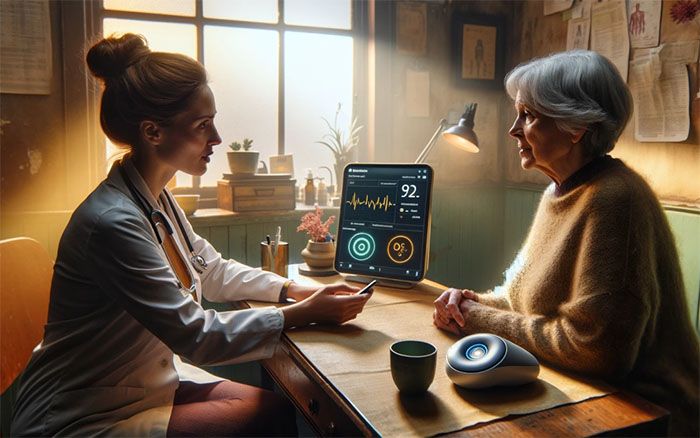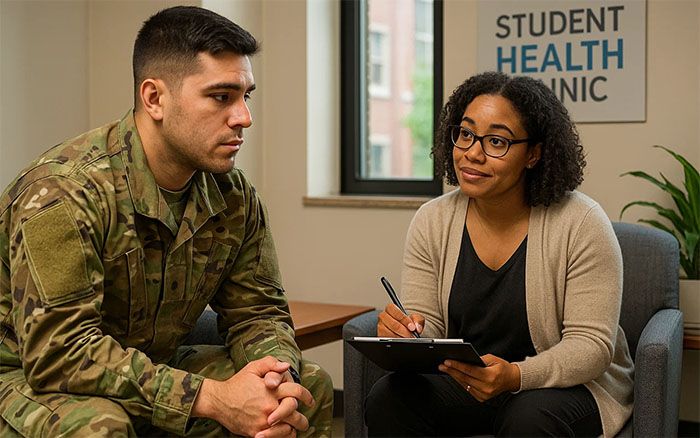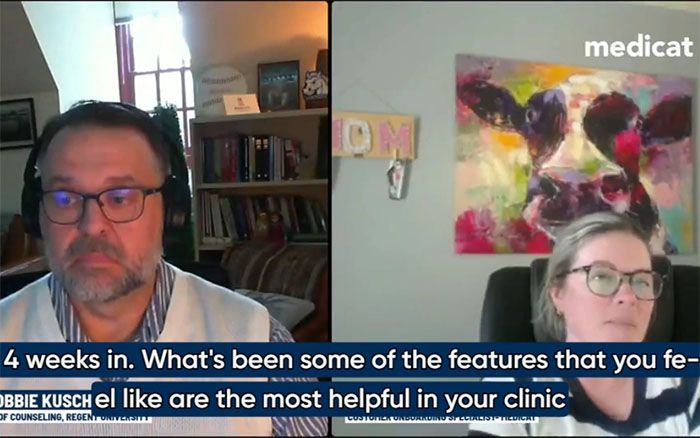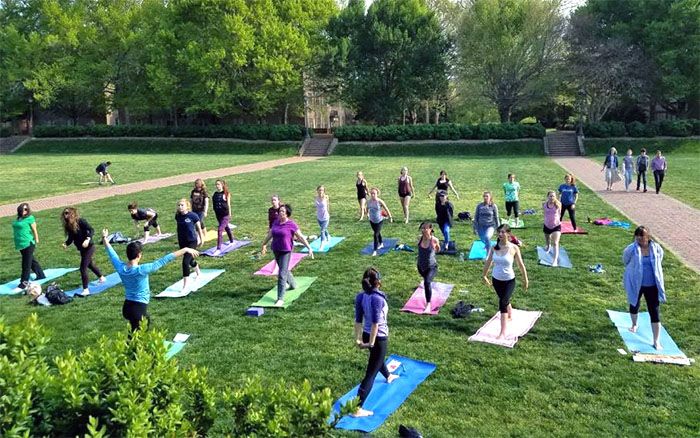How Voice Dictation Speeds Up Clinical Documentation for Campus Providers
Webinar Highlights: Q&A with University of Illinois Providers Katerina Rosenbeck, Nurse Practitioner, and Kaley Hennigh, Mental Health Care Manager.
Paperwork shouldn’t take longer than patient care. Yet for many college health and counseling providers, clinical documentation consumes precious hours each week—time that could be spent directly with students.
To solve this challenge, the University of Illinois at Urbana-Champaign’s McKinley Health Center began using a new voice dictation tool called FluencyDirect that integrates with Medicat’s EHR.
For providers Kate and Kaley, the change has been transformative, giving them more time for students and less time tied to documentation. Continue reading to learn from their experience.
Q1: Before using voice dictation, how were you documenting patient visits?
Kate: Honestly, it was mostly manual typing. That was just my default; sitting down after a session and typing everything out. I’d use templates sometimes to save time, but even with those, I felt glued to the keyboard.
Kaley: Same here. Typing was just the norm, but it wasn’t practical for mental health notes. Some of my cases are very detailed, so it could easily take me more than 15 minutes to finish a single note.
Most providers still rely on manual typing for documentation, according to our webinar poll.
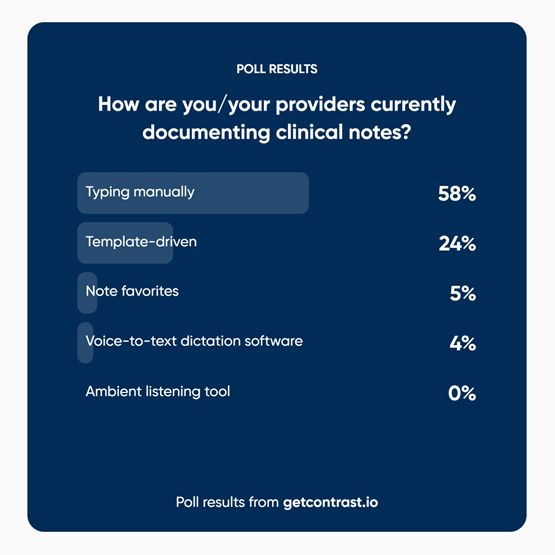
Q2: After adopting voice dictation, what kind of difference did you notice in your workflow?
Kate: The dictation tool sped up everything. Instead of clicking through boxes or typing endlessly, I can just say what I need and it gets entered. I was pleasantly surprised at how accurate it is, even with background noise. It also recognizes different accents, which is a big plus on a diverse campus like ours. For me, it cut my charting time dramatically and made the whole process feel less like a burden.
Kaley: It took a little practice at first, like any new tool, but once I got used to it, my note-taking time dropped by more than half. What used to take me 15+ minutes, I can now finish in under 5. Even for complex cases or crises, I can usually complete notes in 5 to 10 minutes.
Q3: What about working in shared spaces — does background noise interfere?
Kate: I work in a bullpen-style setup with two providers and it’s not an issue. The speech mic filters out conversations or background interruptions. Even if a nurse comes in to let me know a patient is ready, it doesn’t pick that up.
Kaley: I have my own office, so it’s quieter, but I still use the handheld mic with a stand. I just move it closer if needed. The nice part is you can control when it’s on or off, so you’re not accidentally recording things you don’t want to.
Q4: Dictation vs. Ambient Listening: What’s the Difference?
- Dictation tools like FluencyDirect transcribe your clinical notes as you dictate them out-loud, with commands for punctuation and formatting.
- Ambient listening tools record the entire encounter in real time (with patient consent), then auto-generate the clinical note.
Kate: I haven’t used ambient listening, but I can see the appeal. It could remove the need for saying things like ‘new paragraph’ or formatting manually. My one concern would be how it captures extra information. Students often bring up unrelated issues during a visit — like sore throat first, then suddenly knee pain. I wouldn’t want AI pulling in everything unless I decide it’s relevant to chart.
Kaley: From a mental health perspective, my concern is student trust. Some of our students — especially international students — are already cautious about platforms like Zoom because they fear being recorded. So having an AI listening tool could feel uncomfortable for them. Ultimately, I think it’s about finding the right balance and being transparent with students.
Q5: How does voice dictation fit into your daily schedules?
McKinley Health Center builds documentation time into each day—15 minutes per hour for medical providers and two 30-minute blocks for mental health staff.
Kate: I like to chart right after each patient while it’s still fresh. With dictation, those five minutes are enough, so I’m finished before the day ends.
Kaley: In our department, we have 30-minute morning and afternoon charting blocks. You can always tell who uses dictation. Their notes are wrapped up during that time, and their task lists are much shorter.
Q6: Beyond patient notes, do you use dictation for anything else?
Kate: Yes! I’ve also found it helpful for emails, letters, and project work. Basically, anywhere I’d be typing a lot, I use dictation.
Kaley: If I’m writing a letter for a student or drafting something longer in Word, I’ll use it. Once you get used to it, you realize how much time it saves beyond clinical charting.
Key Takeaways
Voice dictation has helped providers at McKinley Health Center reclaim valuable time, reduce documentation stress, and improve efficiency without compromising accuracy.
For both medical and mental health providers, it’s not just about saving time— it’s about creating space to focus on what matters most: student care.
Interested in hearing the full conversation? Watch the full webinar replay.



